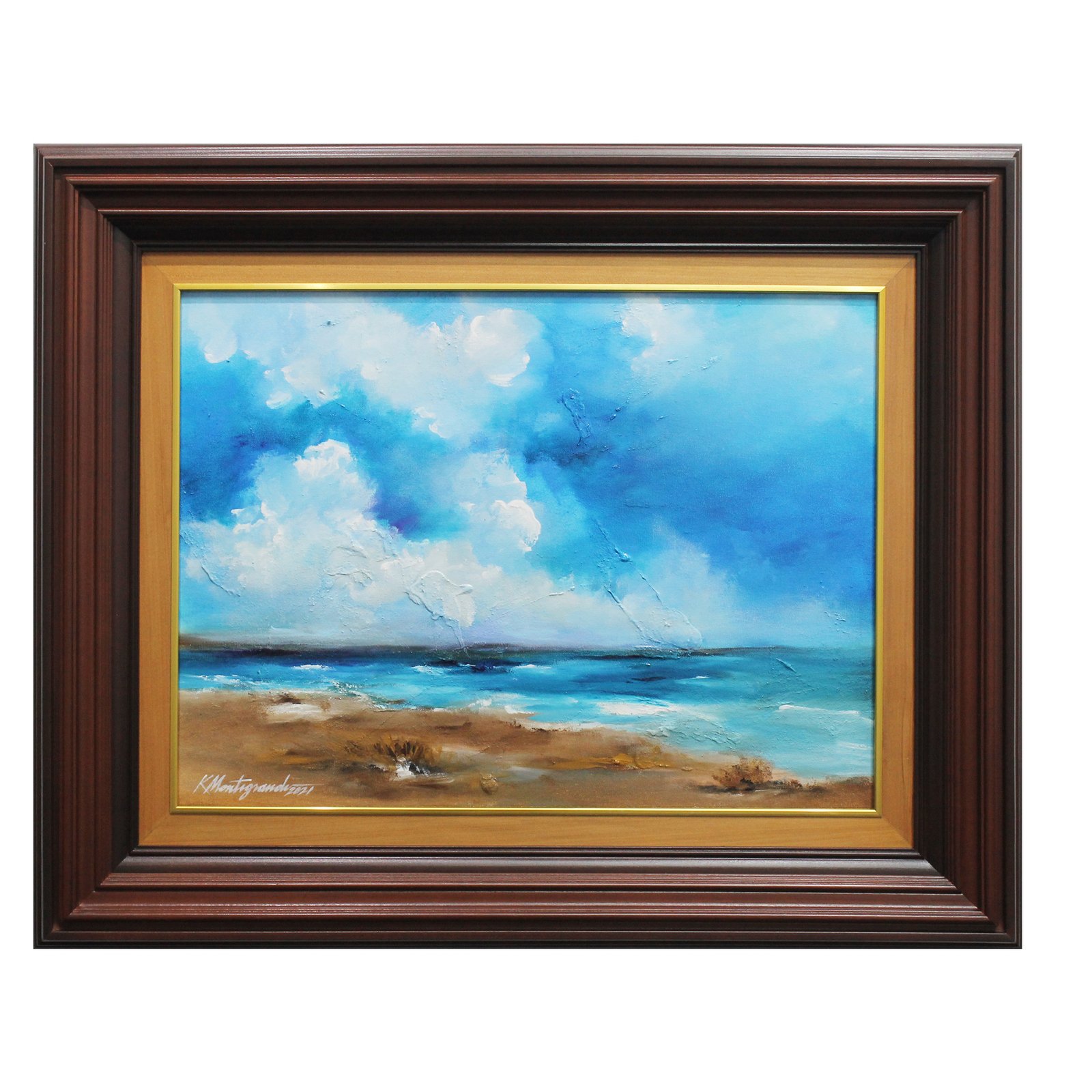Symphonies of Seas and Skies
Start
25 September 2021End
24 October 2021Artist
Kenneth John Montegrande
I live not in myself, but I become
Portion of that around me; and to me,
High mountains are a feeling, but the hum
Of human cities torture: I can see
Nothing to loathe in nature, save to be
A link reluctant in a fleshly chain,
Class’d among creatures, when the soul can flee,
And with the sky, the peak, the heaving plain
Of ocean, or the stars, mingle, and not in vain.
(Lord Byron, Childe Harold’s Pilgrimage, Canto 3, stanza 72)
When Lord Byron wrote of the profound connection of humanity with nature in his poem Childe Harold’s Pilgrimage, he stressed the affinity of the Divine with the natural world, quite unlike the earlier predominant thought that nature was something that man had to subdue. Western philosophers, theologians, and yes, even painters latched on the idea of the sublime as an approximation of an experience of the divine – where man feels simultaneously the terror of being so small and insignificant in relation to the vastness and magnitude of nature, at the same time, awe and fascination for that which is eminently greater.
In Kenneth Montegrande’s Symphonies of Seas and Skies, we experience the sublime, despite the smaller canvases that he uses. Through the intimate works, we get a glimpse of the artist’s spirituality which is a foundation of his artistic endeavors. In the fourteen paintings which comprise the exhibition, we experience what the artist described as symphonies of seas and skies. And like a symphony, it can be divided into movements between overwhelming power and calm, quiet joy.
The works The Mystery of Light Out of Darkness, Embracing Darkness, Lights of Wisdom, Night Whispers, When Clouds Kiss the Sky III, Light of Life, Still, Sound of Inner Silence all give the impression of – overwhelming power, vastness, and magnitude. Through the proficient use of chiaroscuro, and the proficient composition which thematically uses the power of the waves echo the form of the clouds creating the illusion of a vast unity between sea and sky, Montegrande astutely suggests the sublime presence of the divine in the ordered natural world, in a similar awe-inspiring way as God appeared as an earthquake and thunder and lightning over Mount Sinai as he gave the Israelites His commandments on their escape from slavery. The works liberate us from the dreariness of the everyday, specially now that we have a pandemic which has overwhelmed our way of life, and briefly allow us to marvel at the glory of God, assured that He is in control.
In the same analogy that the paintings are a theophany, the second movement in his symphony, manifested in the predominantly monochromatic works namely When Clouds Kiss the Sky IV, One Fine Day, Midnight Peace, and In Your Presence, which focuses on the quiet and calm joy that a peaceful seascape brings, they are in a sense akin to the incarnation of God as a carpenter from Nazareth, bereft of glory, but filled with hope, peace and a gentle authority. Accessibility is given priority over the overwhelming glory allowing us to ponder the divine in our daily existence.
Beethoven’s music for his Ninth Symphony, with lyrics from Shiller’s poetry, seem an appropriate imaginary soundtrack as one contemplates the works on exhibit. And like the music which moves us, we begin to understand Schiller’s words loosely paraphrased “We enter drunk with fire, thy sanctuary…all people, divided by customs, become brothers, where your gentle wings abide. Brothers there must be a loving Father above the starry canopy. Do you sense the Creator, world?”
- Ricky Francisco







